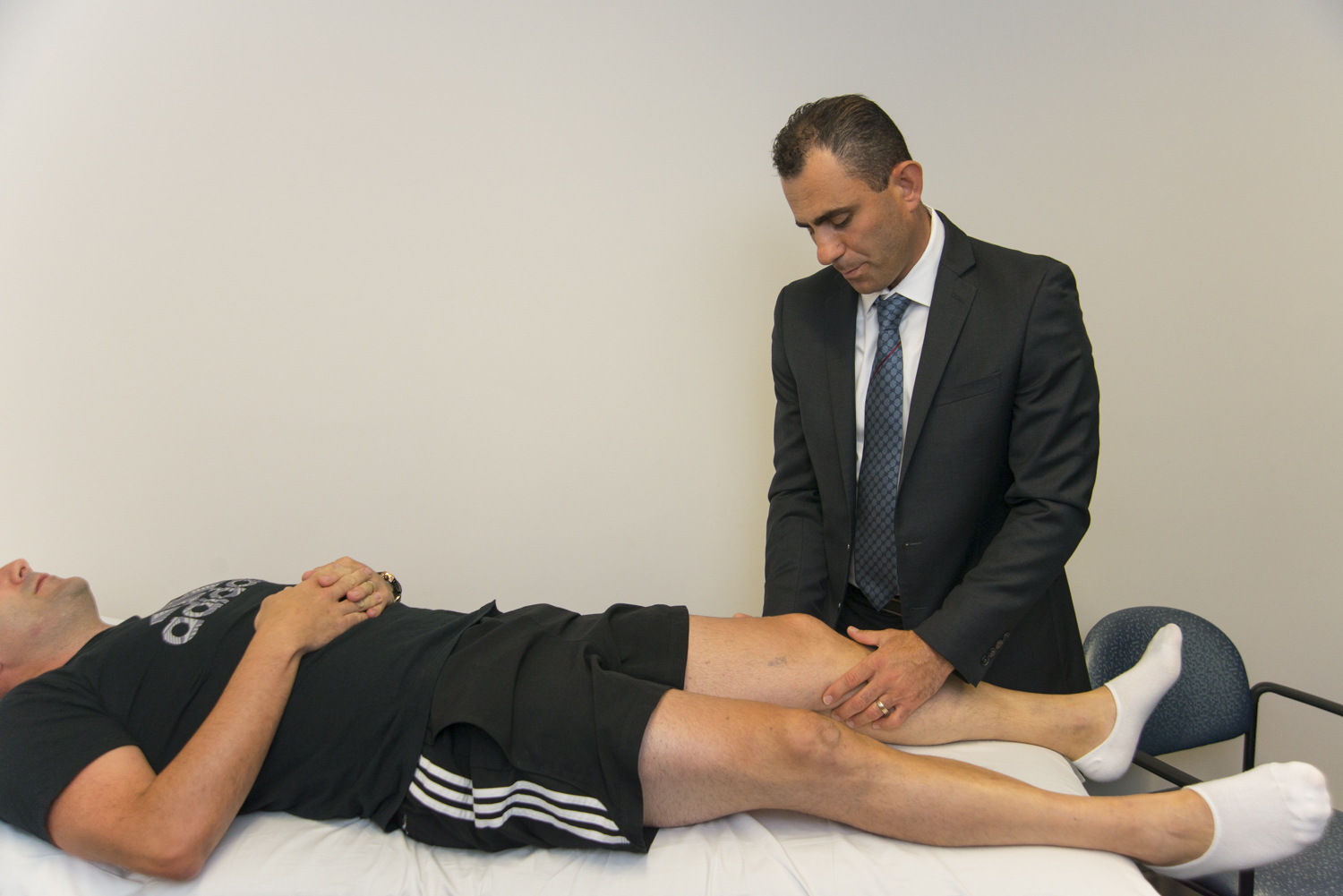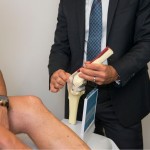
Hamstring injuries are a muscle strain or tear that are a common and painful sporting injury prevalent among footballers, sprinters, basketballers, soccer players, tennis players and other sports people whose activities require a mix of speed, power and agility. These injuries occur most often at the middle area at the rear of the thigh and can be a mild strain, a partial tear or a complete tear and are graded 1-3 depending upon their severity.
- Grade 1: is a mild muscle strain or pull which will usually recover on its own in around a week or two.
- Grade 2: is a partial muscle tear.
- Grade 3: is a complete tear of the muscle or an attachment.
What is the hamstring and how does it function?
The hamstring is a group of three muscles that are located on the back of the thigh. The muscles are the:
- Semitendinosus
- Semimembranosus
- Biceps femoris
The hamstring muscles start at the bottom of the pelvis and move down the thigh where they cross the knee joint to end at the upper part of the leg attaching to the tibia/shin bone below the knee. The hamstring muscles join together with tough connective hamstring tendons and attach to the pelvis. In the leg they have separate attachments.
The hamstring functions by allowing us to bend/flex the knee and extend the hip.
How do we injure the hamstring?
The main cause for hamstring injury is due to muscle overload most often occurring when the muscle is in the process of contracting or shortening. This can ensue when the muscle is overstretched or challenged with sudden movement or the force of a sudden load being applied to the muscle.
Often injuries occur at the “swing phase” of running. This is when the outstretched leg is about to be put on the ground and the knee needs to bend necessitating the muscles to suddenly shorten or “contract”. Other common causes are sudden changes of direction, sudden stopping and jumping.
How do you know if you have injured your hamstring?
If you have only had a mild injury, you may only have a small amount of pain, however if the injury is more serious, hamstring injuries are very painful and you will know immediately.
Typical symptoms of hamstring tears will include sudden sharp pain sometimes accompanied by a “popping” sensation at the back of the leg and an inability to run. Often hamstring injuries will result in a fall/collapse. Other symptoms include:
- Pain when you bend or straighten the leg.
- Tenderness, swelling and bruising at the rear of the thigh.
- Weakness in the leg. This can last for a period of up to 8 weeks depending upon the severity of the injury. In some instances this will include a period of inability to walk or even stand.
What factors can contribute to damaging your hamstring?
There are a number of known risk factors as well as suspected risk factors associated with hamstring injury. These include:
- Not doing an adequate warm up prior to activity.
- Sporting activities that require sudden stopping, change of direction, sprinting and jumping.
- Previous hamstring injury causing a weakness in the muscle.
- Age: affecting those with increased age and adolescents who are still growing.
- Muscle tightness. Tight muscles are vulnerable to strain.
- Muscle imbalance. This is when the opposing group of muscles (the quadricep at the front of the thigh) is stronger which is a common cause of hamstring injury. As the hamstring is generally a weaker group of muscles they become fatigued more quickly and are then susceptible to strain.
- Weak glutes. The hamstrings and glutes work together. If you have weak glutes, the hamstrings will need to work harder to compensate and can become over loaded and strained.
- Poor muscle conditioning.
- Muscle fatigue.
What can you do to reduce the risk of hamstring injury?
As with all muscle injuries, a regular program which focuses on strengthening the hamstrings will reduce risk. Ideal exercises include a mix of horizontal power manoeuvres (ie repeated single leg broad jumps) combined with strength resistance training such as hamstring curls.
Include as part of your pre-set routine regular periods of before and after activities. Before activity should include warming up and stretching and the end of each training and competition session should follow with cooling down and stretching activities. You should also ensure you allow adequate recovery time between workouts and training.
If you have sustained a Grade 3 hamstring injury you may require surgery to repair the damage. What does this involve?
Surgery is performed for hamstring injuries when the tendon has been pulled completely away from the bone. It is more common for the tendon to tear away from the pelvis than it is from the shinbone. Surgery is RARELY required.
When the tendon is torn off the bone, it is referred to as a “tendon avulsion injury”. Although these injuries will heal without surgery, the time to heal takes many months. Surgery is reserved usually for elite athletes and more commonly sprinters.
I perform surgical repair of a tendon avulsion as open surgery under a general anaesthetic. During the surgery, the hamstring muscle is pulled back into place and secured to bone. If there is a complete tear within the muscle but it hasn’t detached from the bone, the muscle is stitched back together.
What is involved with recovery and the time it takes after surgery?
Post surgery, you will need to use crutches as you will not be able to weight bear to protect the repair, and some patients may need a brace to keep their hamstring in a “relaxed” position. The length of time required for these aids is dependent upon the type and severity of the injury that was sustained.
You will also need to undertake a physical therapy program that will begin with gentle stretching to work on improving your flexibility and range of motion. Over time, strengthening exercises will be included as part of your therapy program.
As this type of injury is severe, a typical rehabilitation period for proximal hamstring reattachment surgery is generally around 4-6 months.
Your recovery will be monitored and when strength and function are restored you will be advised that it is safe to return to your sporting activities.
How do I arrange for a consultation?
If you have experienced a hamstring injury, and would like it assessed please call our office on 02 9806 3333.
Once I have examined your injury, I will be able to advise whether we are best able to treat your hamstring tear with non-surgical or surgical methods.
As an orthopaedic surgeon and in my role as team doctor for the Eels and the Wentworthville Magpies, I have provided successful treatment to injured hamstrings allowing my patients a return to a healthy lifestyle as well as continued involvement with sporting and recreational interests. I will be pleased to help relieve your pain and get you back to living a full and active life.


